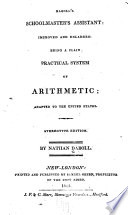 | Nathan Daboll - Arithmetic - 1815 - 250 pages
...miles, 5 furlongs, 180 yds, PROBLEM II. The first term, the last term, and the number of terms given, to find the common difference. RULE. Divide the difference of the extremes by the number of terms less 1, and the quotient will be the common difference. EXAMPLE8. 1. The extremes are 3 and 29, and the... | |
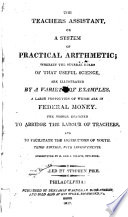 | Arithmetic - 1817 - 214 pages
...2. When the two extremes and number of terms are giren, to iiiid the common ,i;flr.a..«Bee. KPLE. Divide the difference of the extremes by the number of terms, less one ; the quotient will be the common difference. EXAMPLES. 1. 20 and 60 are the two extremes of a... | |
 | Arithmetic - 1818 - 264 pages
...to the basket ? Ans. 5 miles. 233 rods. 2 pr<j5« PROBLEM II. The first term, the last term, and the number of terms to find the COMMON DIFFERENCE. RULE....difference of the extremes by the number of terms less by i, and the quotient will be the common difference required. EXAMPLES. 1. If the extremes be 3 and... | |
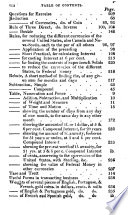 | Nathan Daboll - Arithmetic - 1820 - 256 pages
...miles, 5 furlongs, 180 yds. PROBLEM II. The first term, the last term, and the number of terms given, to find the common difference. RULE. Divide the difference of the extremes by the numbor of terms less 1, and the quotient will be the common ihf ference. EXAMPLES, 1. The extremes... | |
 | Nathan Daboll - Arithmetic - 1820 - 254 pages
...miles, 5 furlongs, 180 yds. PROBLEM II. The first term, the last term, and the number of terms given, to find the common difference. "" RULE. Divide the difference of the extremes by tta. of terms less 1, and the quotient wiiVte ference. v» v^ EXAMPLES 1. The extremes are 3 and 20,... | |
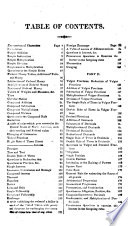 | Jacob Willetts - Arithmetic - 1822 - 200 pages
...for a cent ? Ans. $834 16cta. "1 ', CASE 2. When the two extremes and number of terms are given, t« find the common difference. RULE. Divide the difference of the extremes by the number of term^j less one ; the quotient will be the common difference. EXAMPLES. 7. Admit a debt to be discharged... | |
 | Nicolas Pike - Arithmetic - 1822 - 562 pages
...first term, the last term, and the number of terms being given, to find the common difference. ROLE.* Divide the difference of the extremes by the number of terms less 1, and the quotient will be the common difference sought. EXAMPLES. , 1st. The extremes are 3 and 39,... | |
 | Stephen Pike - Arithmetic - 1824 - 212 pages
...12 for a farthing? Ans. 86L. 17s. 10d. CASE 2. When the two extremes and number of terms are given, to find the common difference. RULE. Divide the difference of the extremes by the number of terms, less one; the quotient will be the common difference. EXAMPLES. 1. Twenty and sixty are the two extremes... | |
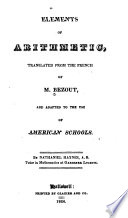 | Etienne Bézout - Mathematics - 1824 - 238 pages
...CASE II. When the two extremes and number of terms are giten, to find the common ratio or difference. Divide the difference of the extremes by the number of terms less 1 ; the quotient witt be the common ratio. EXAMPLES. 1. 20 and 60 are the two extremes of a series... | |
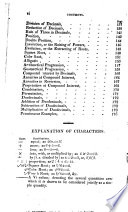 | Thomas Tucker Smiley - Arithmetic - 1825 - 224 pages
...will be the sum of all the terms. Case 2. When the first and last terms (or two extremes,) are given to find the common difference. Rule . Divide the difference of the extremes by the number of terms less 1, the quotient will be the temmon difference. • Questions. What is Arithmetical Progression ? Name... | |
| |